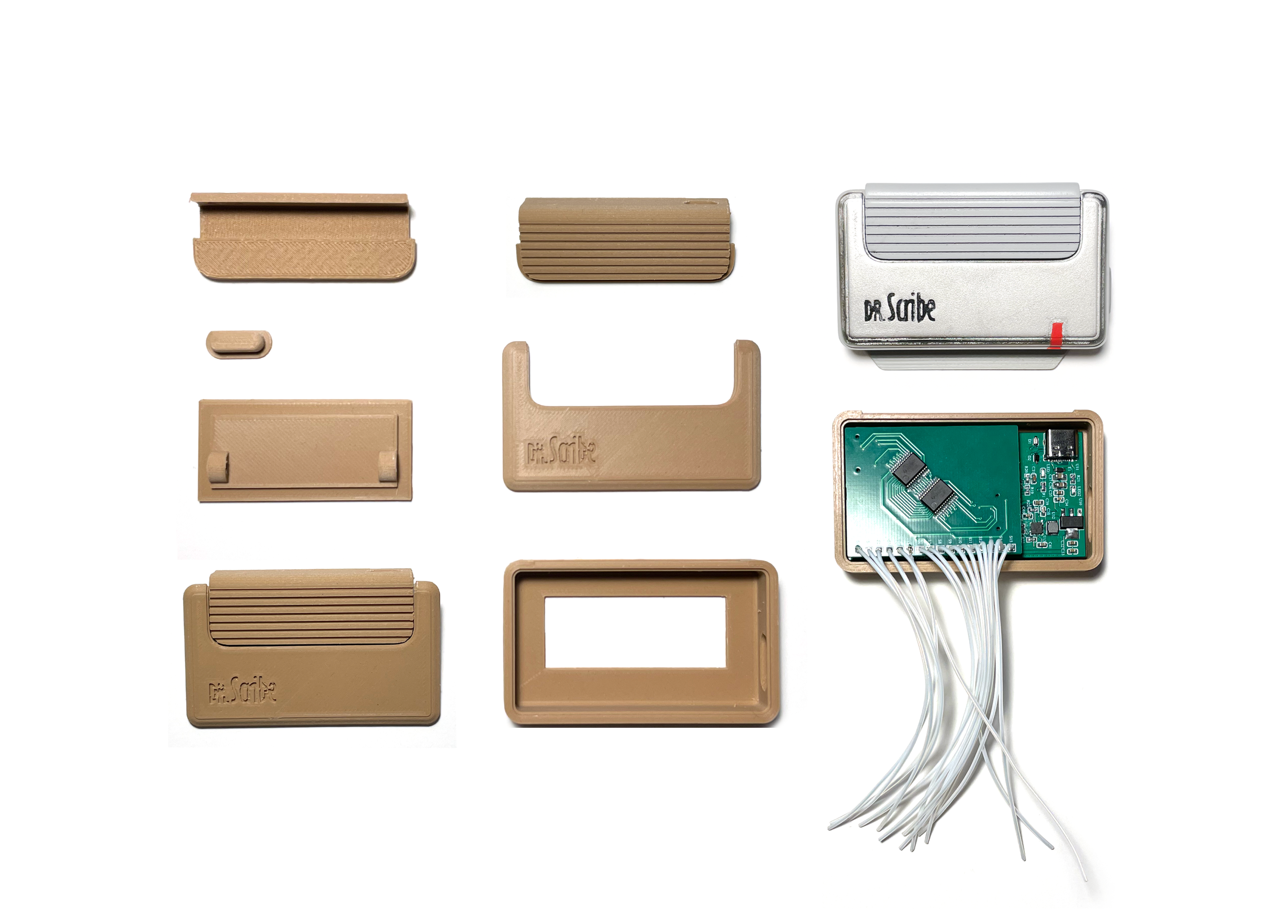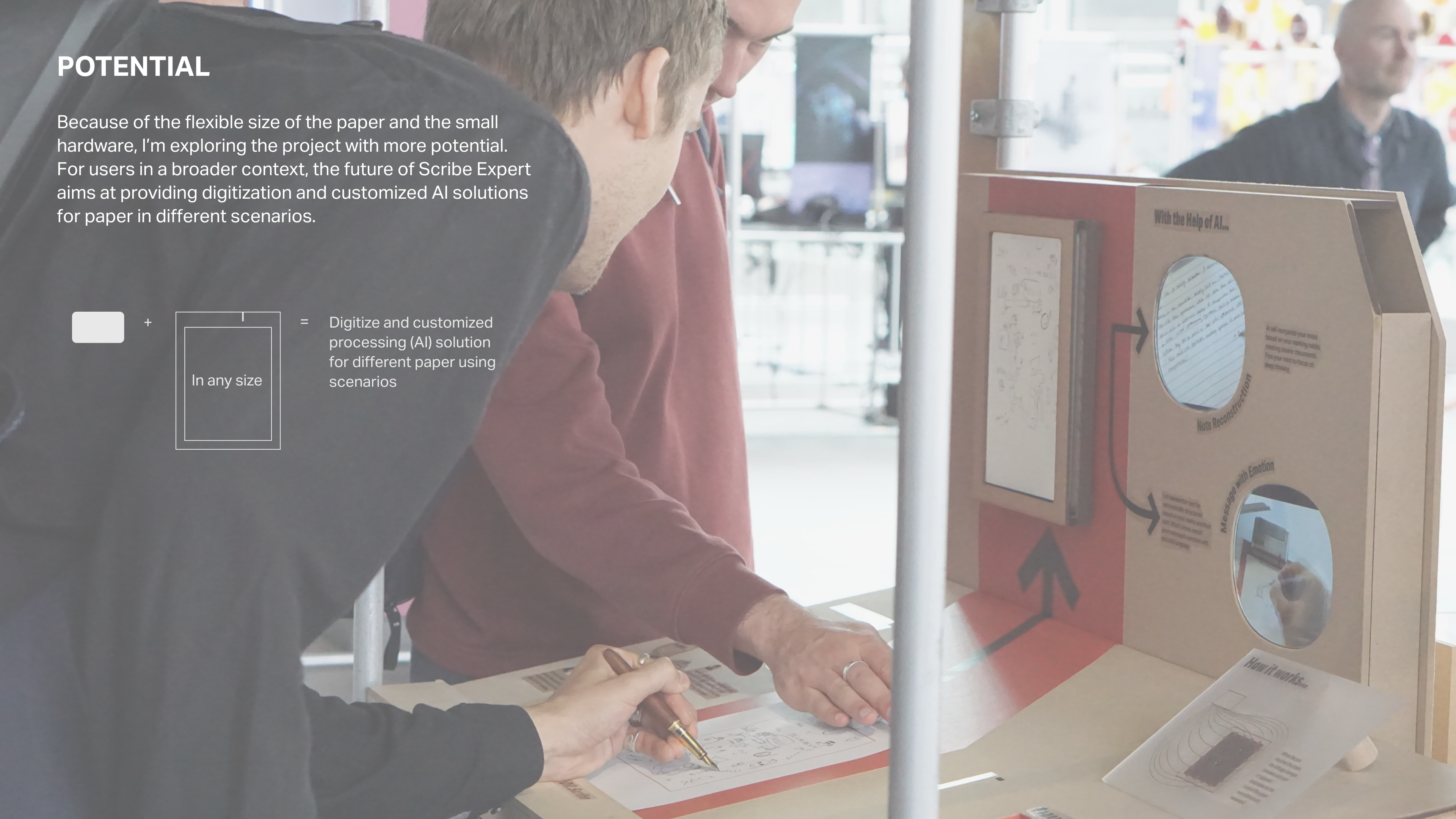Scribe Expert
The Scribe Expert project responds to the enduring appeal of pen and paper, highlighting the importance of human autonomy in today's digital and AI-driven world. Writing on paper offers a multi-sensory, unrestricted experience that stimulates complex brain activity, enhancing mental focus and memory retention. This project is designed for those who appreciate the directness and cognitive engagement of traditional handwriting.
The project designed a small, portable clip that attaches to specialised paper. This clip captures every stroke made with any pen, instantly creating a digital replica on an electronic device. Moreover, Scribe Expert's AI integration allows it to go beyond simple digitisation. The AI learns from the user's marks—such as arrows, question marks, and corrections—and uses these cues to reinterpret and reorganise the handwritten content into a polished, readable, and easily archivable format. This collaboration mode reduces the need for users' extra operation steps and preserves the natural writing experience. It also enables users to freely draw a small picture/sign and swiftly send it as a pictorial message that can convey their emotions more personally and effectively than text or pre-selected memes. By combining the tactile pleasure of writing with the convenience of digital technology, Scribe Expert supports a seamless transition between the physical and digital worlds, cognitive independence and smart enhancement.

Context
Paper will likely never go completely out of fashion.
Despite the prevalence of digital tools and platforms like tablets and online notebooks, many people still cannot live without physical pen and paper. Handwriting offers numerous cognitive and emotional benefits, including improved memory retention, better concentration, and a greater sense of personal expression. Writing by hand is a complex task that engages various cognitive skills—feeling the pen and paper, moving the writing implement, and directing movement by thought. The 'keep mess' privilege of paper allows the brain to remain effectively active for a longer period.
In the age of artificial intelligence (AI), there is a significant need for individuals to maintain their cognitive autonomy. As AI continues to permeate various aspects of life, it is crucial to train the brain to stay active and engaged rather than becoming overly dependent on handy AI assistance. This is an essential aspect of 'AI literacy.'
However, embracing digital tools is also necessary in the modern world, as digitization is becoming the first step toward enabling people to enjoy the benefits of digital tools for processing, editing, searching, and sharing their work. To help individuals thrive in this technologically advanced environment, I aim to intervene in the note-taking and writing process. My goal is to find a design solution that protects human autonomy and keeps the brain actively engaged while providing the convenience of digital accessibility.

Value Proposition
My approach focuses on preserving the authentic experience of writing with a pen on paper, taking full advantage of the cognitive benefits associated with this process. I aim to enable users to think deeply and reorganize information into their own understanding and expression while writing on paper. Simultaneously, I seek to digitize the content in a subtle manner that does not disrupt the user experience. On the digital platform, AI will assist in reorganizing the content to make it more readable and easy to archive.
Crucially, the AI in my system will not take the lead but will learn from the user's marks on the paper. Based on the meaning or function of these marks, the AI will perform specific actions and rearrange the content on the digital platform. This process ensures that the user's writing processes are not interrupted, instead they can indicate to the AI how to handle their physical content without extra effort or attention.
Crucially, the AI in my system will not take the lead but will learn from the user's marks on the paper. Based on the meaning or function of these marks, the AI will perform specific actions and rearrange the content on the digital platform. This process ensures that the user's writing processes are not interrupted, instead they can indicate to the AI how to handle their physical content without extra effort or attention.
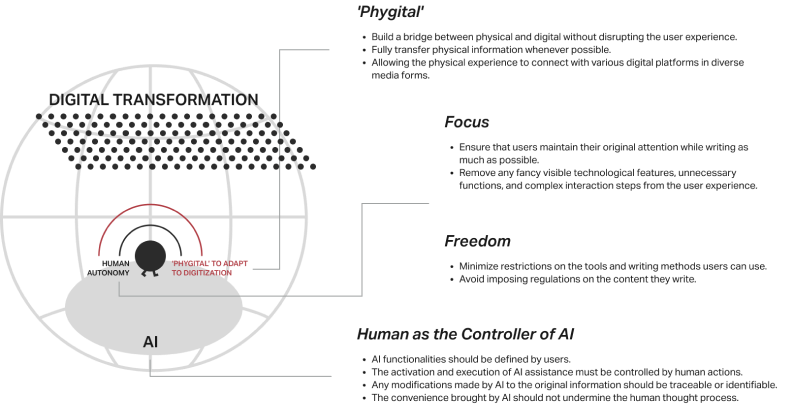
DR.Scribe

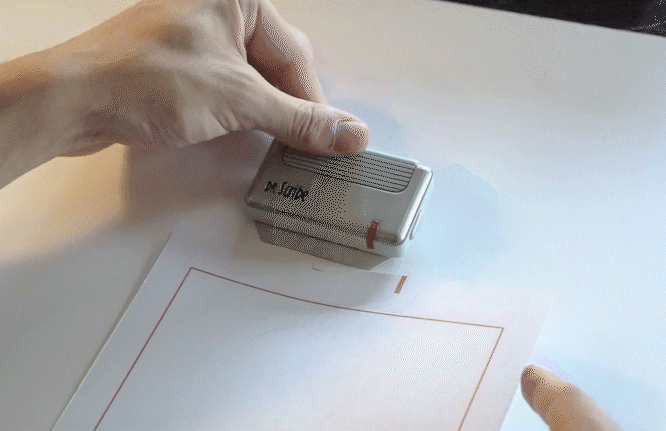


Writing within the frame area on the paper. The handwritten content being digitised.
Meanwhile, the AI responds to the content based on the user's preference settings. For example, an arrow drawn by the user serves as a trigger for the AI to reorder the paragraphs on the page.
In this instance, quotation marks written by the user trigger the highlighting of the text within the quotes.
Specific symbols drawn by the user trigger the AI to convert less legible handwriting into printed text.
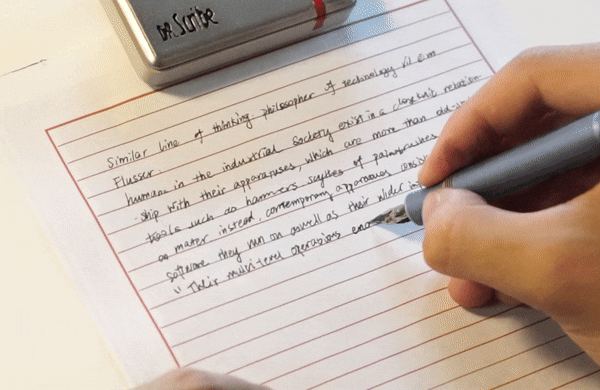

Sometimes, you might want to quickly send a message to a friend expressing your mood.
By drawing it in your preferred style, the image can convey your feelings more intuitively and freely than text.

Technology Behind
The working principle of Electrical Impedance Tomography (EIT) was applied in this design. The PCB in the clip and the paper with conductive layer printed on the back together achieve the digitize function. EIT is an imaging technique that visualizes conductivity or impedance distributions both in 2D and in 3D. It’s u
sually used for medical imaging, but research shows that it also has potential to be applied to Human-Computer Interaction. I used Ardunio for early stage prototyping. Then collaborated with factory to make an integrated PCB for smaller size.
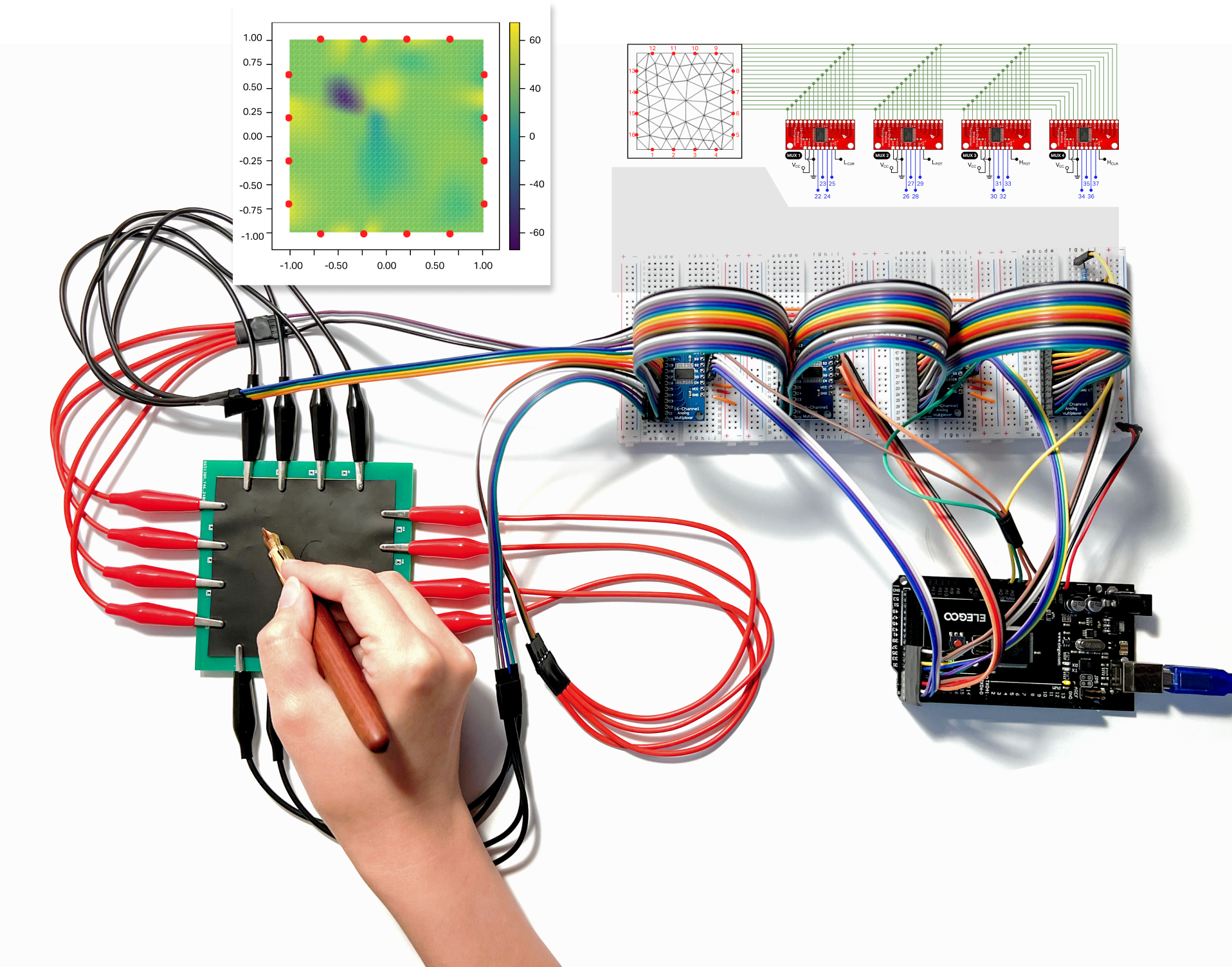
Early stage prototyping
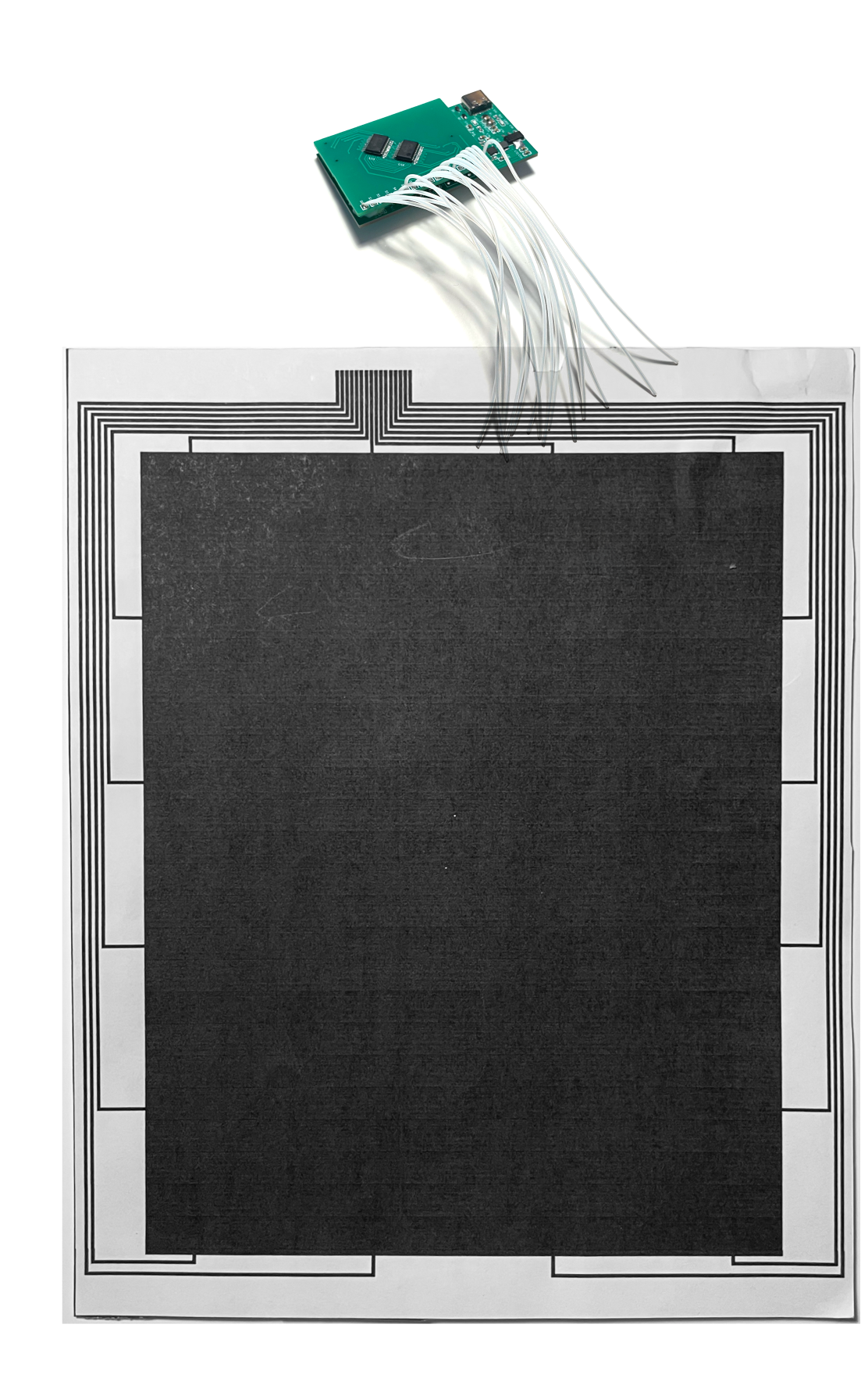
Integrated PCB and paper printed with conductive layer
Special Thanks ︎
Gareth Loudon | Larissa KT | John Steves | Charlotte Slingsby | Shaoyu Wang
Gareth Loudon | Larissa KT | John Steves | Charlotte Slingsby | Shaoyu Wang
